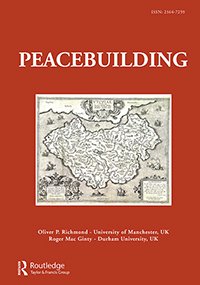By Antônio Sampaio
In the past decade, the Rio de Janeiro metropolitan area has witnessed, consecutively, some of the world’s most intense clashes between criminal groups over territorial control, implemented one of the most innovative urban security strategies and, later, reverted to a classic militarized, iron-fisted approach to fighting crime. At the core of these clashes, strategies and crackdowns is a long-standing armed struggle involving criminals, militias and state forces for territorial control in the second largest city in Brazil, one of the world’s top 10 economies. In the main, the security actor that responds to criminal groups’ grip over the city’s large, densely populated hillside slums (known as favelas in Portuguese) is the military police, which has acquired a reputation for a ‘shoot-first-askquestions-later’ approach. The force is also often associated with its elite special-operations squad, BOPE (Special Police Operations Battalion, translated from the Portuguese). This is a deadly force of heavily armed officers placed at the spearhead of police operations engaging with gang-controlled favelas. Its insignia is a skull perforated by two pistols and a knife. The state security forces, therefore, have been described as brutal and militarized – with good reason. Brazil’s new political leaders, sworn in in early 2019, both at the federal and state level, unleashed upon the country a vision of further repressive policies on public security without the accompanying governance and developmental approaches to the urban areas where armed criminal groups are concentrated. President Jair Bolsonaro’s security proposals have been thin on longterm solutions; he has resorted instead to deregulating gun possession and reducing penalties for police officers shooting suspects. The president’s lack of strategy to tackle the problem has not hindered his ‘tough-on-crime’ rhetoric: in August 2019 he said his proposals would make criminals ‘die in the streets like cockroaches’. Bolsonaro’s ally, the governor of the state of Rio, Wilson Witzel, has gone further. Witzel has ordered an increase in the use of snipers, deployed to shoot suspected criminals from helicopters. These kinds of policies mark a return to a long tradition of repressive security approaches in Rio (as analyzed in the second section of this report) and represent a radical reversal of previous governmental approaches focused on improving marginalized urban areas and communities where the grip of organized crime has been stronger. Despite this excessive focus on repression, the core security issue in Rio de Janeiro is not the authorities’ militarized policies on security. Rather, this, and the police, is just one part of the core issue, namely the consolidation of an illicit order in marginalized territories amid the declining legitimacy of the state. The militarization of security policies, which is part of declining state legitimacy, is a reaction that intensified and probably reinforced the core problem. Meanwhile, the rise of violent, armed non-state actors has been partially a response to the heavy-handed police crackdowns, but it is also a response to other criminal actors, one that serves the purpose of establishing, enforcing or defending the illicit order. (The term ‘illicit order’ refers to a situation in which an armed criminal actor has a permanent presence in a given urban territory, and establishes rules and punishments enforced by the threat or exercise of violence. The effectiveness and severity with which those rules are enforced may vary over time.) Another distinctive feature of Rio’s security landscape over the past decade has been experimentation with a stabilization strategy in gang strongholds, referred to locally as pacificação (‘pacification’). This strategy had been around for 10 years by 2018, showing that it is possible to reclaim areas from gangs (at least for a time). It also distinguished itself by the authorities’ attempt – successful for some time – to reconcile the use of armed force with socio-economic development initiatives, such as urban infrastructure and educational programmes. To break a vicious cycle of recurring police incursions in slums, which often resulted in intense gunfights and deaths, local authorities combined a heavily armed ‘occupation’ of slum areas with a gradual push for community policing, state-managed public-service delivery and development. In doing so, the government introduced a political element in its urban security policy, the thinking being that neither policing nor social development were sufficient by themselves to achieve the desired results. Instead, authorities recognized that urban security could be combined with a profoundly political purpose – to recover the allegiance of local residents, introduce state institutions and establish state governance. No wonder the pacification programme was compared to counterinsurgency by US diplomats and academics, given its parallels with the counterinsurgency principle of wrestling population support away from rebel groups and towards government authority. In the pursuit of this local political objective, policing, infrastructure investment, public services and social development programmes were deployed – with impressively positive results during the first five years or so of the pacification process (approximately from late 2008 to 2013). The programme marked a watershed moment in the perception of what is the goal of an urban security strategy: the transition of violent territories to stability through institutions, governance and security. An important reason why the programme has received worldwide attention as a case study on urban security is that it worked – for a time. A 2012 World Bank study, for instance, is titled ‘Bringing the state back into the favelas of Rio de Janeiro’....etc....
Geneva, SWIT: Global Initiative Against Transnational Organized Crime, 2019. 40p.





